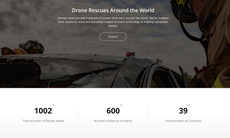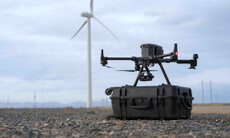DJI imaging technologies have long been used for everything from photography and film making, to building inspection and agriculture. Now they are entering the medical field with the DJI Osmo, led by Harvard Medical School researchers in Boston, MA, at the Massachusetts General Hospital.
Leading this effort is Dr. Marcelo Matiello. As an enthusiast of new technology, he's pursuing his natural inclination to put the best new technology to use to improve his everyday work as a medical school teacher, in his medical practice, and in research projects.
We had a chat with Dr. Matiello to hear about how he's been using the Osmo in his work.
Hi Marcelo, can you start off by explaining how you've adopted the DJI Osmo for your everyday work?
I use the Osmo in a number of ways. First of all, I use it to capture findings in physical exams. In the field of neurology, it's extremely important to accurately identify subtle signs of a disease so as to be able to accurately diagnose it. As an educational tool, recording high quality video of such signs is very helpful to transmit the knowledge to medical students and residents. For instance, abnormal eye movement can be very helpful in identifying the location of a stroke or aneurysm. A high-definition video is therefore an invaluable educational tool.
You mentioned previously that you also use it in your lectures?
Yes, I have used the Osmo to video capture my lectures. Recording video is important for two reasons: First, it allows students to watch from home to re-cap the lectures. Second, by watching my own videos I learn how to perform better as a lecturer and an educator. With the Osmo, I can control the camera remotely using my phone and get high-quality video without needing a camera man to hold the camera.
How is the Osmo superior to a smartphone or action camera for your purposes?
When capturing videos for medical education you want to be sure that you're using the best possible portable cameras. Most of the situations you encounter are quite unique and you need to capture it right there and not let the moment escape. When a patient is present, that's a valuable moment and you better not miss it.
Another thing of major importance is confidentiality. Other than medical and educational purposes, the video and photos can not be shared. By using a camera that stores the images on a memory card instead of on the phone's memory, you add another level of security.



